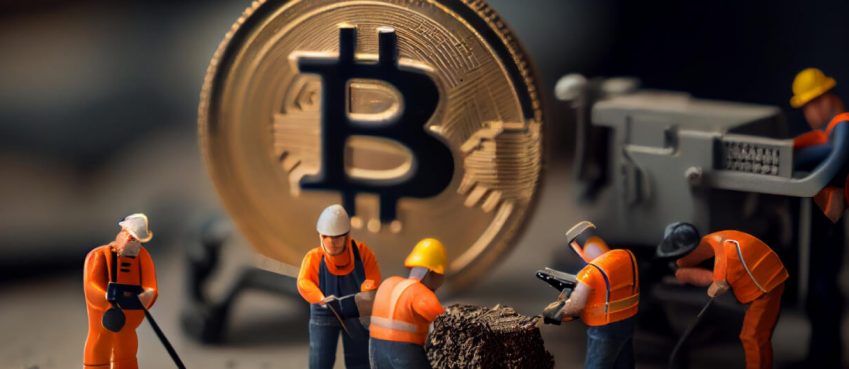
Flashback to 1995- the dot com bubble. The popularity of the world wide web had the entire world in disarray. Disruption of industries- the term perhaps was originated because of what the internet and the prospect of connecting each and every entity all across the world felt like. All it took for a company to go big was having a .com in their name, and ridiculous amounts of cash and capital started flowing in, even if the company wasn’t functional or had no proprietary technology to boot. Eventually the dot com bubble did burst, but its part in revolutionizing the internet and modern technology and businesses cannot be understated.
Many would argue that we were, or are, in a similar position today, with regards to cryptocurrency and blockchain. Ever since the introduction of Bitcoin by the anonymous Satoshi Nakamoto, scores of individuals have followed suit and tried to create a product inspired by arguably the world’s first cryptocurrency. What is all the rage about? Why are people so excited and wary about crypto at the same time? Let’s decode.
The basics of cryptocurrency
In simple, layman language, cryptocurrency is money that you can store on your own computer- not on bank servers, or inside lockers, but your own computer hard drive. It is a revolutionary concept, first made popular by Bitcoin. The biggest X-factor in how cryptocurrency works is that it is decentralized. There are no middlemen or agencies through which you transfer money to people, it is a pure peer-to-peer fund transfer. The decentralized nature of cryptocurrency is made possible by blockchain, the technology that powers Bitcoin and a whole host of other cryptocurrencies. Similar to having an email address and password for your email account, you possess a set of keys for your cryptocurrency wallet or account. The public key is like your email address, which you can share with other people to receive payments. Your private key is analogous to a password and helps keep your money secure. To understand this, take the example of billing software that we use.
The intermediate level- how are Bitcoin and other cryptocurrencies actually “made” or issued?
Now that you know how cryptocurrency works, it is time to learn a little bit about how to get your hands on some. Taking the example of Bitcoin, cryptocurrency is generated through a process called mining. Think of it as mining for minerals in real life- it takes a lot of time and effort! The process of mining revolves around solving complex problems, usually mathematical, using powerful computers and equipment. People compete with each other to see who solves the problem first. The one who does takes home the cash! There is a small transaction fee involved in the process as well, similar to what a bank charges for fund transfers or other activities. The transaction fee in cryptocurrency transactions is quite low, however.
The popularity of Bitcoin and other cryptocurrencies is owed to a few factors. The mining process is one of them since it takes insane time and effort to generate cryptocurrency. Scarcity is another factor, with only a limited amount of cryptocurrency being possible to be generated. For instance, it is estimated that there can be only 21 million BTC generated in the lifetime of Bitcoin. The combination of scarcity and effort is what gives Bitcoin and other cryptocurrencies their value.
Also read: [10 Best] Blog To Video AI Free (Without Watermark)
Getting into the advanced part
Disclaimer- this section is for those who want to delve a little deeper into the world of cryptocurrency. We talk about some advanced concepts on how cryptocurrency is generated, namely something called consensus mechanisms.
The process of mining is carried out on a network built on the blockchain, usually. Different nodes on the network, called the participants, have their own mining rigs set up.
The mining process does not end at solving the complex problem. The solution also has to be verified by all nodes on the network, i.e. they have to reach a consensus that the given solution is correct, and the next block or unit of cryptocurrency can be generated. The method to arrive at such a consensus is called a consensus mechanism or algorithm.
There are multiple consensus mechanisms that are being used in cryptocurrencies around the world. Bitcoin uses the proof of work consensus mechanism, which is simply each node verifying the solution to the mathematical problem given by the node claiming to generate Bitcoin.
This was everything that you should be knowing about how the world of cryptocurrency works. You now understand what a cryptocurrency is, how it is stored, and most importantly, how it is generated and valued. Will it be as big as the world wide web bubble? Will it stand the test of time? Let’s wait and watch!
Top 10 News
-
01
Top 10 Deep Learning Multimodal Models & Their Uses
Tuesday August 12, 2025
-
02
10 Google AI Mode Facts That Every SEOs Should Know (And Wha...
Friday July 4, 2025
-
03
Top 10 visionOS 26 Features & Announcement (With Video)
Thursday June 12, 2025
-
04
Top 10 Veo 3 AI Video Generators in 2025 (Compared & Te...
Tuesday June 10, 2025
-
05
Top 10 AI GPUs That Can Increase Work Productivity By 30% (W...
Wednesday May 28, 2025
-
06
[10 BEST] AI Influencer Generator Apps Trending Right Now
Monday March 17, 2025
-
07
The 10 Best Companies Providing Electric Fencing For Busines...
Tuesday March 11, 2025
-
08
Top 10 Social Security Fairness Act Benefits In 2025
Wednesday March 5, 2025
-
09
Top 10 AI Infrastructure Companies In The World
Tuesday February 11, 2025
-
10
What Are Top 10 Blood Thinners To Minimize Heart Disease?
Wednesday January 22, 2025







